Manava - Welcome!
THE PEARL OF THE PACIFIC
Owned by France, and located in the middle of the South Pacific Ocean, about halfway between California and Australia, the aptly-named French Polynesia has two official languages – French and Polynesian (Tahitian). While close to half of the 280,000 residents live in the capital of Pape’ete on the island of Tahiti, only 25 of the region’s 118 islands and atolls are actually uninhabited, and English is widely spoken in tourist areas. Divided into five distinct archipelagos, or island groupings, and spread out over an area larger than Europe, this dreamy and languorous paradise welcomes close to 250,000 visitors each year. Arguably, some of the best islands for scuba diving in French Polynesia include: Tahiti, Moorea, Bora Bora, Rangiroa, Tikehau, Tetiaroa, and Fakarava.
Best time to dive?
EVERY DAY IS A GOOD DAY TO DIVE IN FRENCH POLYNESIA
With only two seasons to speak of – warm and dry, and warm and humid – and a daytime temperature that averages 28-29oC (82-85oF) throughout the year, scuba diving in French Polynesia is pure magic at any time. The water temperature hovers consistently between 26-29oC (79-84oF), and typical visibility is an astounding 100ft+. But for a more specific look at where to dive and when, you might want to consider the following highlights: Humpback whale season in the Society Islands Archipelago (including Tahiti) is between July and
October. By flyandsea.com
Best time to Dive?
EVERY DAY IS A GOOD DAY TO DIVE IN FRENCH POLYNESIA
With only two seasons to speak of – warm and dry, and warm and humid – and a daytime temperature that averages 28-29oC (82-85oF) throughout the year, scuba diving in French Polynesia is pure magic at any time. The water temperature hovers consistently between 26-29oC (79-84oF), and typical visibility is an astounding 100ft+. But for a more specific look at where to dive and when, you might want to consider the following highlights: Humpback whale season in the Society Islands Archipelago (including Tahiti) is between July and
October. By flyandsea.com
- {{ listingType.name }}
- prev
- next
Do you offer Diving services?
Promote your services and connect with divers
Are you a Scuba diver?
Join and get the best benefits for your next trip
Do you offer Diving services?
Promote your services and connect with divers
Are you a Scuba diver?
Join and get the best benefits for your next trip
Sea Life
Angelfish, Southern stingrays, Barracuda, Black-tipped reef sharks, Butterflyfish, Clownfish, Damselfish, Dolphins, Green sea turtles, Grouper, Humpback whales, Lemon sharks, Leopard rays, Manta rays, Moray eels, Needlefish, Octopus, Parrotfish, Pufferfish, Sea cucumbers, Sea urchins, Snapper, Starfish, Triggerfish, Wrasse.
Dive Sites
Scuba courses in the islands are easy to find, and the seemingly infinite, relatively shallow lagoons that brim with aquatic life are ideal for the avid snorkeler, the novice diver, or for those simply looking to revel in these natural aquariums, while brushing up on technique. With virtually all the dive resorts in French Polynesia either offering scuba diving packages, or providing easy access to the large number of diving centers that do, your only concern will be whether or not you booked enough dive days into your vacation itinerary. Fortunately, with its host of other activities that include surfing, kite-surfing, hiking, golfing and 4WD safaris, this jewel of the Pacific offers lots to keep you busy in your off-time, too.
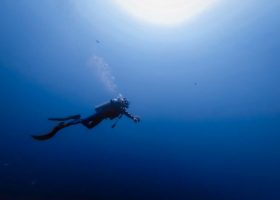
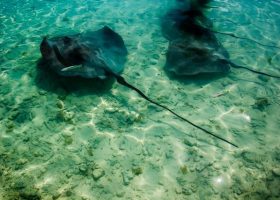
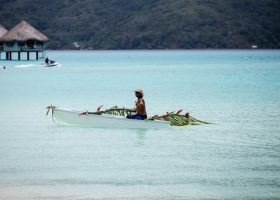

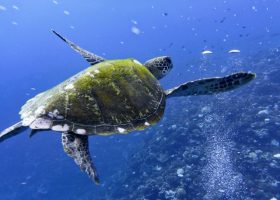
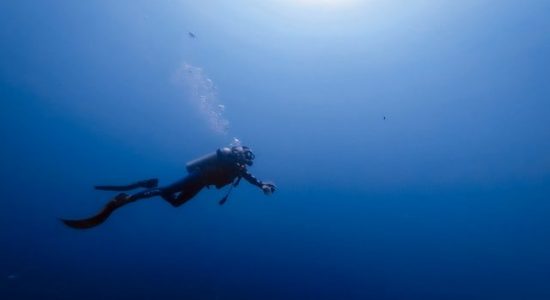
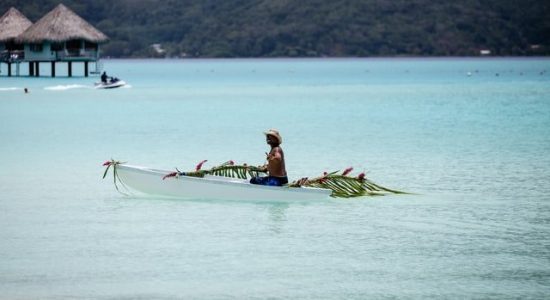
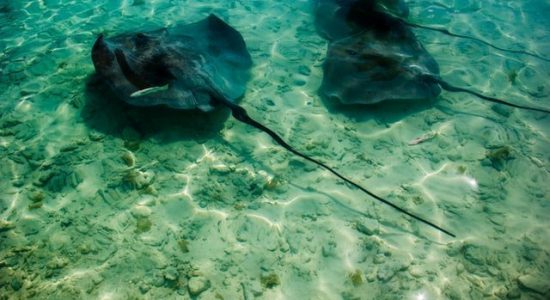
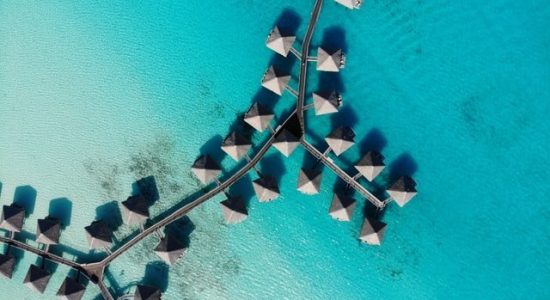

BORA BORA
The Bora Bora scuba diving environment is unique and varied. There are established dive sites in the lagoon, the pass to the Pacific Ocean, and along the outer reef and oceanic drop off.
It is the quantity and diversity of marine life, that is the star attraction of Bora Bora scuba diving. Bora Bora diving is famous for Manta Rays and Sharks, but on all dives you will see colorful hard and soft corals, teeming with reef fish.
_____________________
TAHITI
Proudly displayed on the bodies of Tahitians, you’ll find manta ray, shark, whale and sea turtle tattoos that tell the story of a people defined by the sea. Divers come from around the world to experience these sacred sea creatures, which, in The Islands of Tahiti, hold a place of reverence among the gods.
It’s only natural that the sea around these islands is both figuratively and literally a clear blue heaven on earth. The warm waters that surround The Islands of Tahiti teem with life from flirty clown fish to ever-present sharks to awe-inspiring humpback whales, which arrive between July and November. When you’re ready to do some diving and snorkeling, the heavens await.
__________________
TAPU
Tapu is a popular spot for those who would like to have an up-close encounter with sharks during their dive. Blacktip reef sharks and lemon reef sharks are not uncommon to spot in this location. Aside from sharks, the rich and diverse marine life also includes sea turtles, moray eels, lionfishes, tuna, eels, rainbow jacks, and giant wrasses.
Ilha Grande is an all year round place for diving.
ANAU
This location sits on a shallow lagoon, which is also the reason why it is a great dive spot for beginners. As long as you know the basics, such as diving signals and scuba diving safety tips, you are good to go. Even beginners will not have a hard time discovering its underwater beauty.
_____________________
TUPITIPITI
Prepare to revel in the sight of parrotfish, sharks, and rays. The average depth of the water is 30 meters with good visibility. If you go from August to September, it is also possible that you will see humpback whales swimming around your diving group.
Caves, swim-throughs, and over-hangs are plentiful in this dive site. It is not the easiest to explore. If you are a beginner, you might want to skip this and head to those locations that are friendlier for novices.
_________________________
HAAPITI
It has excellent reef breaks and challenging waves. However, since we are talking about diving in Bora Bora, let’s not talk more about surfing.
Whether you are a newbie or an expert, Haapiti is a good dive site. The maximum depth of the water here is 30 meters. It has gentle slopes, beautiful rocks, and colorful corals that are sure to be visually stunning. Make sure to get your diving camera ready to capture its stunning underwater beauty.
SOME OTHER DIVE SITES: Tumakohua Pass, Tiputa Pass, Garuae Pass, Taotoi, Tiki Point and Teavanui Pass/
More info, visit www.globosurfer.com
How to Arrive
There are flights from Europe to Tahiti-Faa International Airport several times a week. Both Air France and Air Tahiti Nui fly from Paris and connect through Los Angeles. It is also possible to fly to Tahiti from other major European airports, via Los Angeles. Air New Zealand operates flights from London and Frankfurt to Los Angeles, with connecting Air Tahiti Nui flights to Tahiti. The entire trip takes 22 hours with the possibility of a stop-over in Los Angeles (see details with each airline). It is also possible to get to Tahiti from Sydney, Australia (Air Tahiti Hui, Air New Zealand, and QANTAS), and Tokyo/Osaka, Japan (Air Tahiti Nui).

